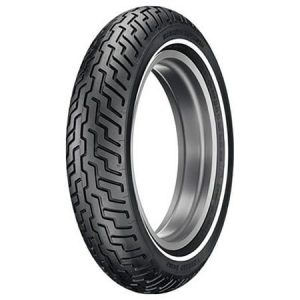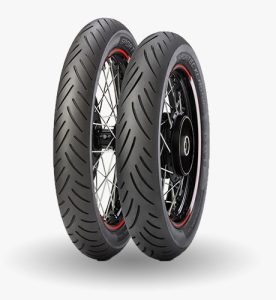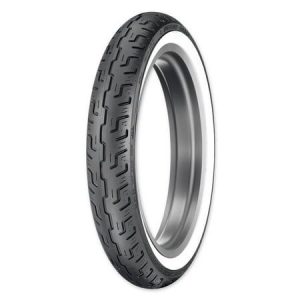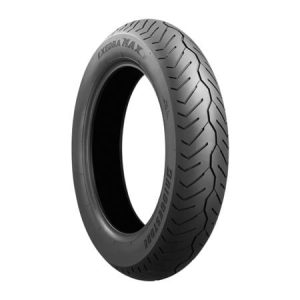Motorcycle tires are crucial for your safety and riding experience. They provide grip, stability, and control while navigating various road conditions. But unlike car tires, motorcycle tires wear out faster due to the concentrated weight and aggressive maneuvering a motorcycle undergoes. So, how many miles can you expect to get out of your motorcycle tires?
This article explores the factors affecting motorcycle tire lifespan and equips you with knowledge to maximize their mileage. We’ll delve into average lifespans, explore signs of wear, and provide tips for proper maintenance and tire care.
Understanding the Factors Affecting Motorcycle Tire Lifespan
There’s no one-size-fits-all answer to how long motorcycle tires last. The lifespan can vary significantly depending on several factors:

- Riding Style: Aggressive riding habits like frequent braking, acceleration, and cornering accelerate tire wear. Conversely, a smooth, relaxed riding style can extend tire life.
- Tire Type: Sportbike tires designed for high-performance handling typically wear out faster than touring tires built for durability and long-distance travel.
- Road Conditions: Rough and uneven roads with potholes or debris can cause premature tire wear. Smooth, well-maintained roads are less abrasive on tires.
- Motorcycle Weight: Heavier motorcycles put more stress on tires, leading to faster wear.
- Tire Maintenance: Proper inflation pressure, regular cleaning, and wheel alignment all contribute to maximizing tire lifespan.
- Climate: Extreme hot or cold weather conditions can affect tire wear. Ozone exposure can accelerate cracking in hot climates, while cold temperatures can stiffen the rubber compound.
The Mileage Mystery: Unveiling Average Lifespans
While a definitive mileage is difficult to pinpoint, here’s a general breakdown of average motorcycle tire lifespans:

- Sportbike Tires: 3,000 to 6,000 miles
- Touring Tires: 6,000 to 10,000 miles
- Cruiser Tires: 7,000 to 12,000 miles
- Adventure Tires: 10,000 to 15,000 miles
Remember, these are just averages. You might get significantly more or less mileage depending on the factors mentioned earlier.
Always prioritize safety over mileage. Replace your tires before they reach the wear bars, even if they haven’t reached the average mileage for your specific tire type.
Spotting the Signs: Recognizing When Your Motorcycle Tires Need Replacing
Don’t rely solely on mileage to determine when to replace your motorcycle tires. Here are some telltale signs that indicate it’s time for new rubber:

- Tread Wear Indicators: Most motorcycle tires have built-in tread wear indicators, small raised sections that become visible when the tread depth reaches the replacement mark.
- Reduced Tread Depth: As the tread wears down, the grooves become shallower. Shallow tread depth compromises grip, especially in wet conditions.
- Visible Cracks or Dry Rot: Cracks in the sidewalls or tread indicate aged or damaged tires that should be replaced. Dry rot appears as a dull, chalky texture on the tire surface, another sign of aging and potential failure.
- Uneven Wear: Uneven wear patterns like scalloping or cupping can indicate improper inflation, alignment issues, or riding habits that need correction. However, even if the wear is uneven, if the tread depth reaches the wear bars, replacement is necessary.
- Vibrations: If you experience excessive vibrations while riding, it could be a sign of tire imbalance or internal damage requiring replacement.
Regularly inspect your motorcycle tires for these signs of wear. If you’re unsure about the condition of your tires, consult a trusted motorcycle mechanic.
Extending the Ride: Essential Tips for Motorcycle Tire Maintenance
By following these practices, you can maximize the lifespan and performance of your motorcycle tires:
- Maintain Proper Tire Pressure: Check and adjust your tire pressure regularly according to the manufacturer’s recommendations, typically found in the owner’s manual or on a sticker near the rim. Uneven or incorrect pressure can lead to premature wear and handling problems.
- Avoid Overloading Your Motorcycle: Exceeding the weight limit of your motorcycle puts additional stress on the tires, accelerating wear.
- Practice Smooth Riding: Aggressive braking, acceleration, and cornering can wear down your tires faster. Aim for a smooth, controlled riding style.
- Store Your Motorcycle Properly: If you’re storing your motorcycle for an extended period, inflate the tires to slightly above the recommended pressure and avoid storing it in direct sunlight or extreme temperatures.

- Regular Cleaning: Clean your tires with a mild soap and water solution to remove dirt, debris, and road grime. This can help prevent premature cracking and maintain the tire’s flexibility.
- Wheel Alignment: Regularly check your motorcycle’s wheel alignment. Misalignment can cause uneven tire wear and handling issues.
- Chain Maintenance: For motorcycles with chain drives, proper chain lubrication and adjustment are crucial. A neglected chain can cause excessive wear on the rear sprocket and potentially damage the tire.
Investing in Safety: Choosing the Right Replacement Tires
When it’s time for new tires, don’t settle for the cheapest option. Here’s what to consider when selecting replacements:
- Match Your Riding Style: Choose tires designed for your riding style. Sportbike riders need tires that prioritize grip and handling, while touring riders might prioritize durability and comfort.
- Consider Weather Conditions: If you frequently ride in wet weather, choose tires with a good tread pattern for water evacuation.
- Read Reviews and Research: Research different tire options and read online reviews from other riders. This can help you narrow down your choices and select tires with a good reputation for performance and longevity.
- Consult a Professional: Talk to a trusted motorcycle mechanic or tire specialist for recommendations based on your specific motorcycle and riding style.
Don’t skimp on safety. Quality tires are an investment in your safety and riding enjoyment.
Don’t Let Flat Tires Flatten Your Ride: Essential Puncture Repair Tips
While tire maintenance and proper riding habits can extend tire life, punctures can happen unexpectedly. Here’s what to do if you encounter a flat tire:

- Carry a Tire Repair Kit: A basic tire repair kit with a plug and plug tool can be a lifesaver on the road. Learn how to use the kit properly before you need it.
- Seek Professional Help for Major Damage: If the puncture is large or on the sidewall, a tire repair kit won’t be sufficient. In such cases, seek professional help from a motorcycle mechanic for a tire replacement.
Embrace a Safe and Fulfilling Ride: The Final Gear Up!
By understanding the factors affecting tire lifespan, recognizing the signs of wear, and adopting proper maintenance practices, you can maximize the mileage and performance of your motorcycle tires. Remember, prioritize safety over squeezing every last mile out of worn tires. Replace your tires when necessary to ensure optimal grip, handling, and a safe, enjoyable riding experience.





